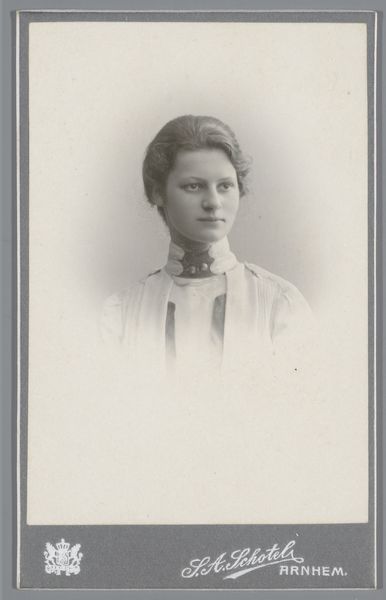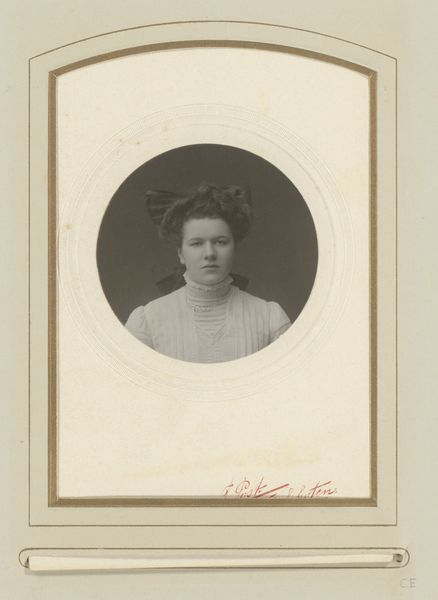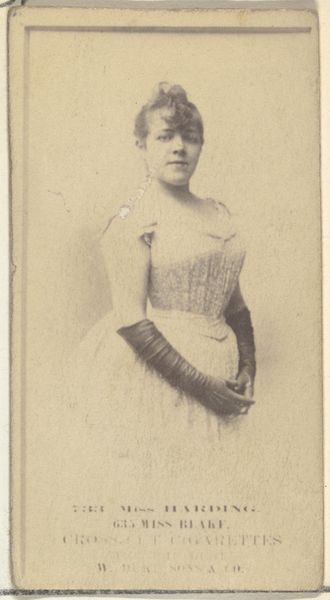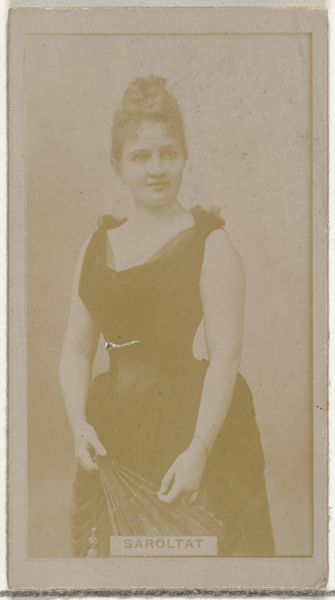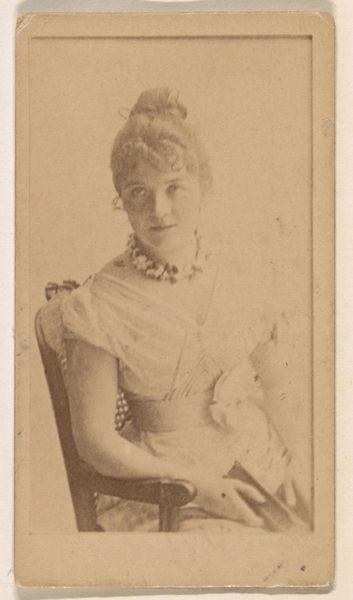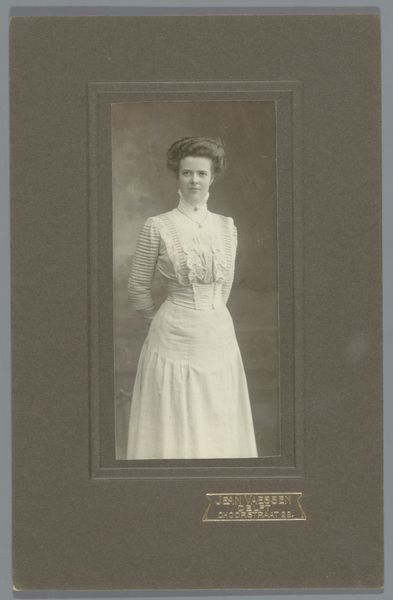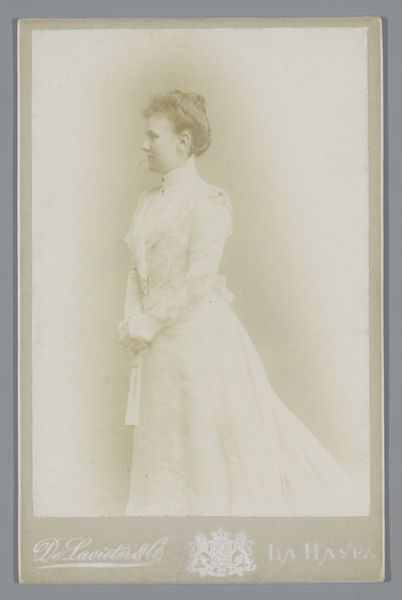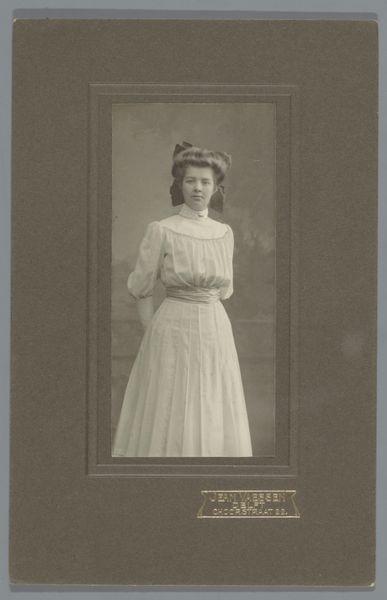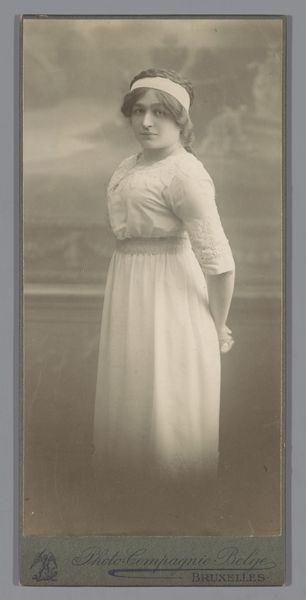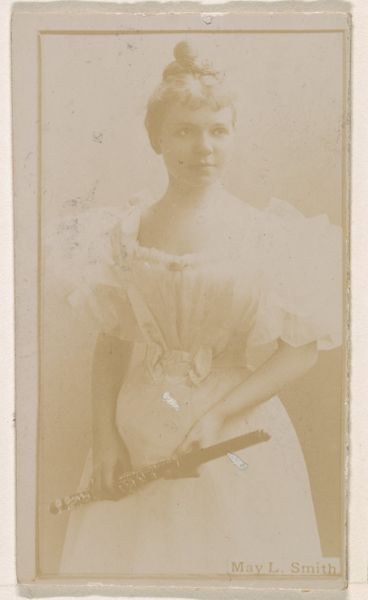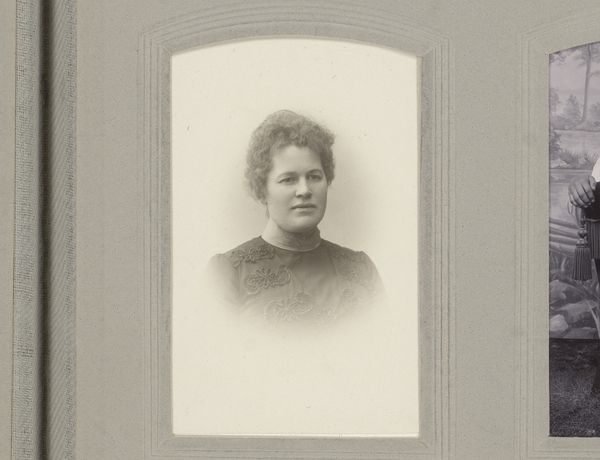
photography, gelatin-silver-print
#
portrait
#
self-portrait
#
landscape
#
photography
#
gelatin-silver-print
Dimensions: height 141 mm, width 98 mm
Copyright: Rijks Museum: Open Domain
Curator: Here we have "Portrait of a Standing Young Woman," a gelatin silver print, believed to be created sometime between 1880 and 1920. The name associated with the work is Hedvig Rosendahl, but without more context, her role is unclear. What is your initial response to this photographic print? Editor: Immediately, the image evokes a sense of constraint, even oppression. Her dress, while elegant, seems to bind her. The neutral backdrop amplifies this feeling, as if she's isolated and confined by societal expectations. Curator: That's a powerful interpretation. From a purely compositional standpoint, I'm drawn to the subtle variations in tone. The limited tonal range focuses the viewer's gaze upon the details of her face, the delicate lace at her collar, and the subtle draping of her gown. The dress seems quite simple in its design. Editor: While seemingly simple, the very style of the dress speaks to a particular era—one of restrictive beauty standards and limited opportunities for women. Who was she, this young woman? Was this portrait a celebration of her emerging adulthood, or a visual record of her confinement within the social structures of the time? I can't help but wonder what she dreamt of, what aspirations lay behind that rather inscrutable expression. Curator: The formalism of the portrait itself–the carefully arranged pose, the soft focus–also reflects the conventions of the time. The technical skill involved in producing a gelatin silver print with such delicate gradations of tone is certainly notable, don't you think? Editor: Indeed. The photographer’s artistry cannot be denied, but what narrative is supported by the artistic decisions that were made here? Photography at this time was emerging as a potent tool—not just for documentation, but also for shaping perceptions and reinforcing social hierarchies. A critical interpretation has to include examining who benefited from that portrayal. Curator: A thought-provoking consideration. Ultimately, perhaps the power of this image lies in its ambiguity. Its stillness invites us to consider both its intrinsic beauty and the complex historical context from which it emerged. Editor: Exactly. It encourages us to look beyond the surface and to ask difficult questions about representation, identity, and the lives of women in the late 19th and early 20th centuries. It definitely speaks to photography's complex and multifaceted impact on how people were seen in those times.
Comments
No comments
Be the first to comment and join the conversation on the ultimate creative platform.
